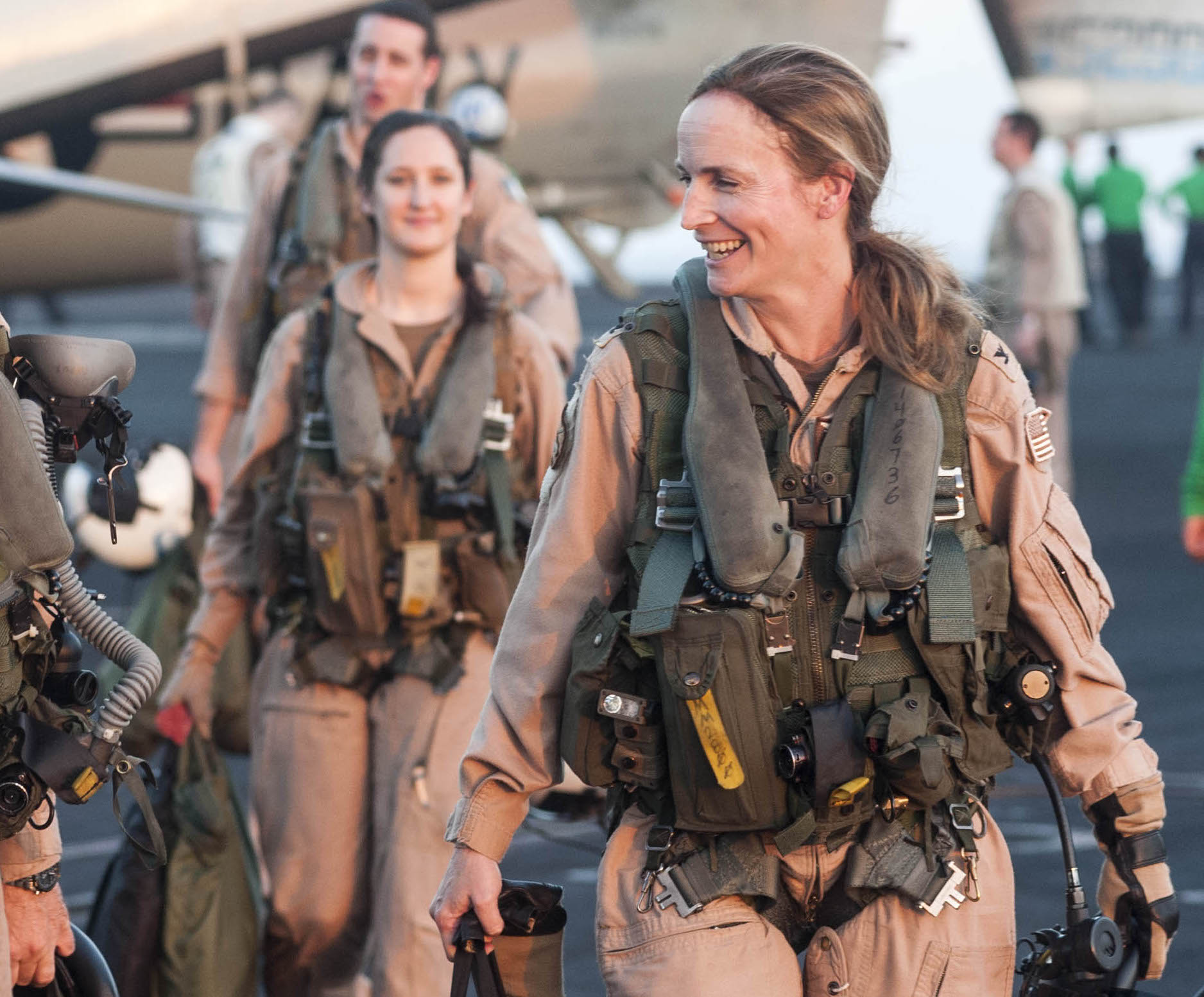
THE PENTAGON — The Navy has appointed former commander of Carrier Air Wing 3 and F/A-18 Hornet pilot Capt. Sara Joyner to lead the service’s effort to research and prevent physiological episodes in its fixed-wing aircraft, amid progress this summer collecting data to help understand the root cause of these PE events, Vice Chief of Naval Operations Adm. Bill Moran told USNI News on Wednesday.
Joyner, who was also selected for promotion to rear admiral, will fill a position recommended in the June 12 “Comprehensive Review of the T-45 and FA-18 Physiological Episodes” report conducted by U.S. Pacific Fleet Command commander Adm. Scott Swift. That report states “there is no single, dedicated entity leading PE resolution efforts” and therefore no unity in correction and mitigation efforts. The report recommended establishing a new organization to lead all naval efforts to resolve PEs, which would not be a permanent organization but would rather last a year or two until the Navy had gotten the PE problem under control, USNI News previously reported.
Joyner will report to Moran and will coordinate directly with Commander of Naval Air Forces, Naval Air Systems Command, the deputy commandant of the Marine Corps for aviation and other top leadership.
The charter for her work is still being finalized, but Moran told USNI News during the interview in his office that Joyner will be tasked with watching over all the ongoing efforts to research, understand and ultimately prevent physiological episodes; coordinating those efforts throughout the Navy and Marine Corps and in tandem with the Air Force and NASA; and ensuring there is no friction between the organizations’ work.
“I want that person working directly for me because I want visibility at the four-star level,” Moran said. This is our number-one safety concern for naval aviation, it continues to be, and so we are bound and determined to make sure we keep our sight picture fresh and where barriers get in the way of moving things forward it’s a lot easier for me to move those barriers sometimes than lower echelons, so that’s the idea.”
Moran called the work so far “a team effort going on here at the flag level” and said he expected Joyner would have full cooperation from and access to top leadership.
The Navy, Air Force and Marine Corps continue to struggle with physiological episodes experienced by pilots flying with Onboard Oxygen Generation Systems (OBOGS) and the Environmental Control System (ECS). Department of the Navy aircraft that are affected include the T-45C Goshawk trainer, the F/A-18E/F Super Hornet and EA-18G Growler. Two different types of events are included in the “physiological episodes” terminology: hypoxia, where a pilot receives insufficient or contaminated oxygen, and decompression sickness, where the ECS creates unsafe cabin pressure.
The June report from Swift to Moran also noted a flawed PE monitoring system, which relied on pilots to self-diagnose themselves with hypoxia or decompression sickness and report the incident up the chain. It recommended a data-driven approach, which Moran told USNI News is already underway.
Importantly, he said, oxygen pressure monitors were put on several dozen T-45 trainers, and students and instructors have been flying with them all summer.
“We’re getting those warnings that we never had before, so indications of low oxygen pressure in certain flight regimes,” he said.
“What we’ve got to get away from is reliance on [individual perceptions and self-reporting], and more from data. So putting sensors on these airplanes so we can collect data and get a richer understanding of what’s going on.”
With the additional sensors on the planes, “we’re able to collect the kind of data that may – and I say may – give us some insight into what would be causing lack of oxygen to the pilot, which causes hypoxic events. So I think that’s all good. And there are other monitors that we’ve put in place in the T-45s. A whole host of what we would call refresh rates on the F-18s that we hope to bring back some youth in the Environmental Control System on the F-18, see if that helps reduce the number of PE events, pressurization events especially. So all of that data is being collected while we continue to fly, and we’re keeping a very close look on PE events and what happens,” Moran said.
“We have response teams that go out now; if a pilot experiences an event, we know what protocols to provide to both take care of the aircrew but also to measure what happened to try to make some determination about root cause. Root-cause analysis continues, and it’s mining down into many different branches of evidence to find out what we can to try to determine what is the true cause. And we may find out that there are multiple causes here and we’ll have to address all of them.”
Joyner comes to this new job from serving as the Navy Senate Liaison in the Office of Legislative Affairs, but her background is as an F/A-18 pilot who commanded Carrier Air Wing (CVW) 3 and Strike Fighter Squadron (VFA) 105. The 1989 U.S. Naval Academy graduate and Maryland native began her career flying the A-4E Skyhawk before moving to the Hornet. She has also worked in the air warfare directorate as the Joint Strike Fighter requirements officer – working directly for Moran, who was the air warfare director at the time – and she was named a senior fellow in the CNO Strategic Studies Group.
“She’s got all the right things. If I had to go pluck somebody out by their resume, I’d go, well that’s a pretty good pick right there,” Moran said.
“I know her personally and have a lot of confidence in her. I know she’ll do a great job.”





